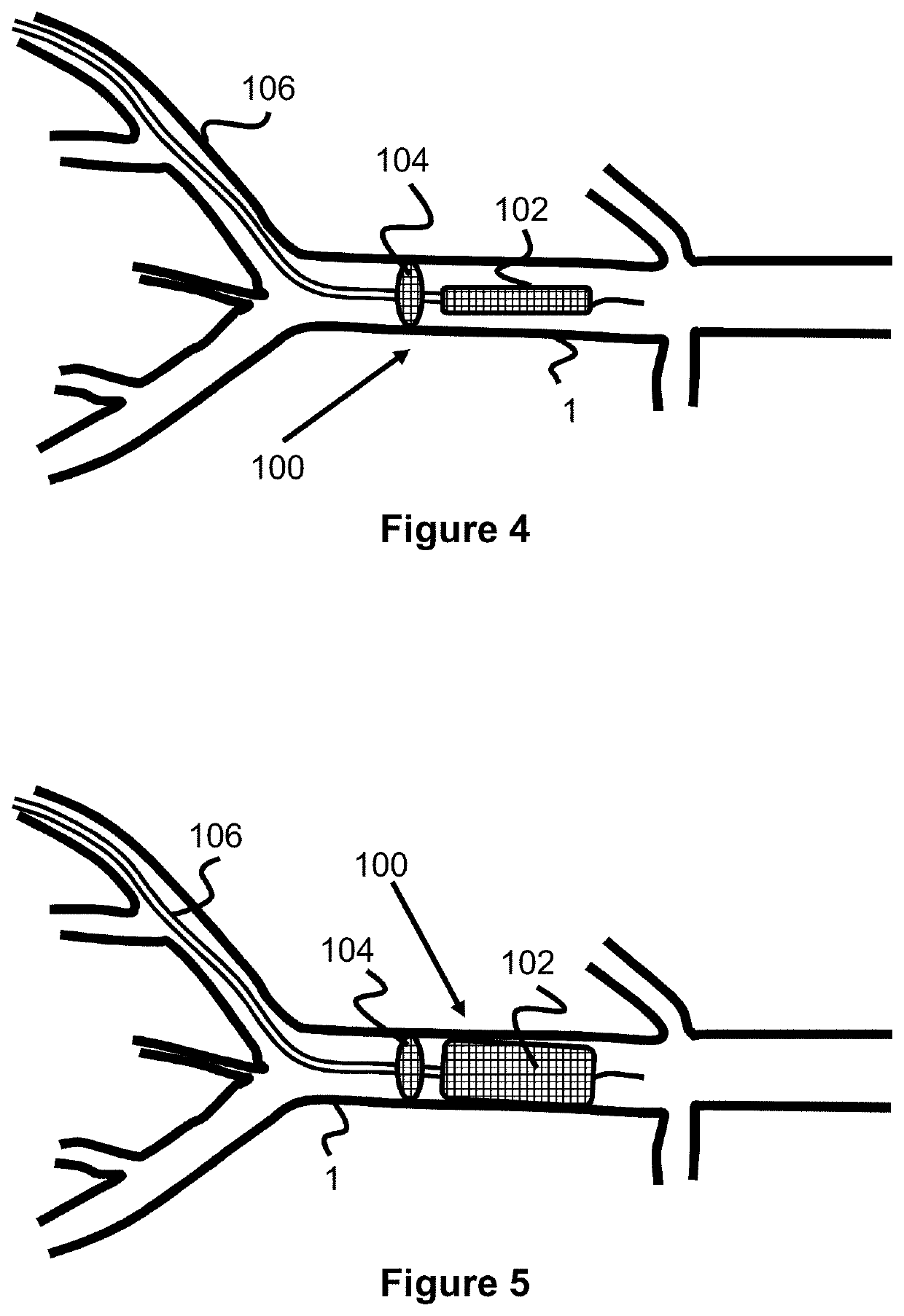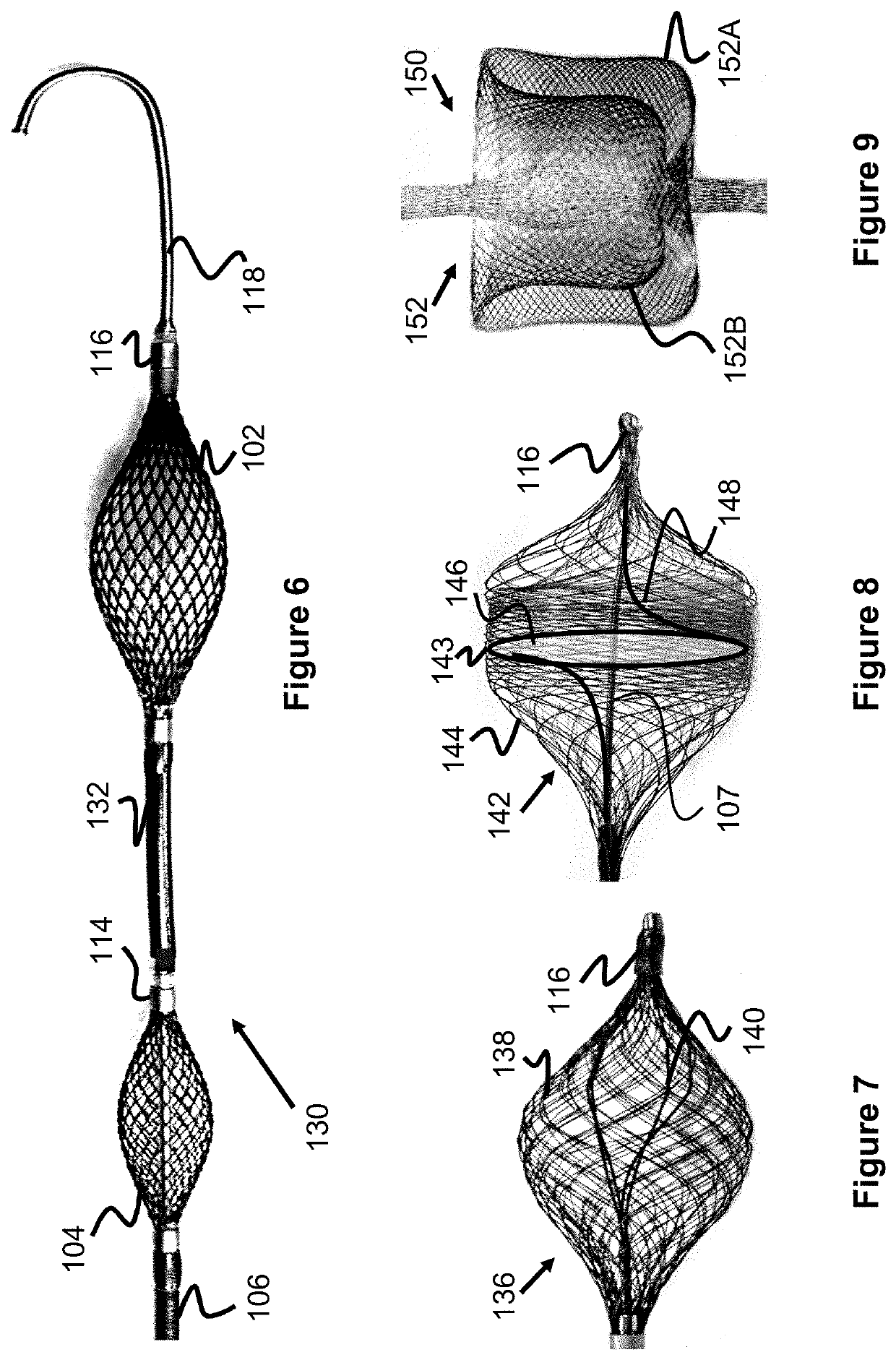Temporary aortic occlusion device
a technology of aortic valve and occlusion device, which is applied in the field of temporary aortic valve occlusion device, can solve the problems of traumatic hemorrhage, death of active-duty military service members, and difficulty in non-compressible torso hemorrhag
- Summary
- Abstract
- Description
- Claims
- Application Information
AI Technical Summary
Benefits of technology
Problems solved by technology
Method used
Image
Examples
Embodiment Construction
[0039]Specific embodiments of the invention will now be described with reference to the accompanying drawings. This invention may, however, be embodied in many different forms and should not be construed as limited to the embodiments set forth herein; rather, these embodiments are provided so that this disclosure will be thorough and complete, and will fully convey the scope of the invention to those skilled in the art. The terminology used in the detailed description of the embodiments illustrated in the accompanying drawings is not intended to be limiting of the invention. In the drawings, like numbers refer to like elements.
[0040]FIGS. 1-5 are directed to a temporary aortic occlusion device 100 that has a radially expandable mesh locator 104 and a radially expandable mesh occlusion portion 102. The device 100 can be loaded in a femoral sheath (e.g., 6F Sheath) and advanced into the common iliac towards the aortic bifurcation target. Once the distal end of the device 100 is close ...
PUM
 Login to View More
Login to View More Abstract
Description
Claims
Application Information
 Login to View More
Login to View More - R&D
- Intellectual Property
- Life Sciences
- Materials
- Tech Scout
- Unparalleled Data Quality
- Higher Quality Content
- 60% Fewer Hallucinations
Browse by: Latest US Patents, China's latest patents, Technical Efficacy Thesaurus, Application Domain, Technology Topic, Popular Technical Reports.
© 2025 PatSnap. All rights reserved.Legal|Privacy policy|Modern Slavery Act Transparency Statement|Sitemap|About US| Contact US: help@patsnap.com



